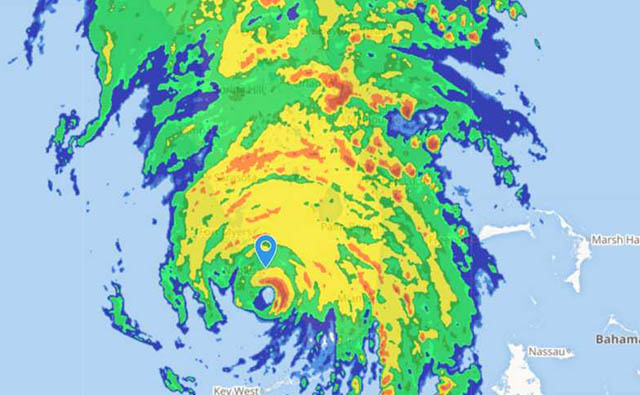Industry News, Agriculture & Feed
Hurricane Irma Will Make Orange Juice Unaffordable and Destroy Your Grocery Bill

Industry News, Agriculture & Feed

Citrus costs could rise if Hurricane Irma, which is deemed a category 5, makes landfall in certain regions of Florida, as the state heads toward harvest season for oranges, but other vegetables could also see prices spike.
Depending on where Irma makes landfall, produce prices will fluctuate, said Giacomo Santangelo, an economics professor at Fordham University in New York and Seton Hall University in South Orange, N.J. Florida is the main producer of oranges in the U.S., although California and Texas also grow them.
“We can expect the prices of citrus fruits such as oranges, limes, tangelos and grapefruit to be affected; however, tomatoes are Florida’s second-largest crop,” he said. “Florida is the largest producer of sugar cane in the U.S.”
The production of orange juice plays a large contributing factor to the state’s economy, since Florida is the largest producer of the beverage in the U.S. and second in the world since over 95% of oranges grown there are used to produce it, said the Florida Department of Citrus. The citrus harvest season begins in October and runs through June, which means torrential downpours and extensive flooding could damage the crops extensively.
Florida produced 68.7 million boxes of oranges in the 2016 to 2017 season, which ended in June. The industry employs over 45,000 people and contributes $8.6 billion to Florida’s coffers. Fruit production occurs in 27 counties of central and south Florida, according to the food and resource economics department of the University of Florida. Florida’s citrus bearing grove area has declined to 435,000 acres in 2016, a reduction of 42% decline from 2000.
“If orange crops are destroyed as a result of the storm, that will most certainly impact supermarket prices as harvesting starts as soon as next month,” said Greg McBride, chief financial analyst for Bankrate, the New York-based financial content company. “Central and south Florida are home to many citrus farms and producers, so the storm is likely to impact their operations and potentially disrupt the supply chain at least temporarily.”
The orange juice futures market has been reacting to the potential destruction of the hurricane, said Jack Scoville, a senior market analyst at the PRICE Futures Group in Chicago. Within the past few days, the market has been rallying.
“It depends on how much rain falls, which could affect the quality of the acid inside the oranges to make the juice,” he said. “If there is extreme wind then the oranges become less usable, especially if they fall to the ground. If it is processed fast enough, they can sell it for juice. I am not sure if they will survive storm.”
November orange juice futures could run as high as 165 cents per pound, Scoville said.
If orange juice prices skyrocket at grocery stores such as Kroger and Walmar, consumers will likely seek other options since sales of juice have declined in recent years, Scoville said.
“Consumers show an amazing ability to find something else to drink,” he said. “They can buy pills like Vitamin C ones.”
Retail traders should seek smaller trades since the orange juice futures market is thinly traded, Scoville said. Chasing the market belief that they will reach new highs could be problematic.
“They should be careful in trading and there is no real reason to assume this will be free coin money,” he said. “Make sure you know what you’re going into and have stops in place. Trading options is extremely expensive and know what you are willing to risk.”
Orange juice futures have not fared well in the aftermath of El Nino periods and have lost an average of 7.9% three months later, according to analysis conducted by S&P Dow Jones Indices.
Orange juice remains one of the worst commodities following a hurricane or an El Nino event and even six months after an El Nino event occurs, their futures decline an average of 5.6%, according to the S&P GSCI Orange Juice Index, said Jodie Gunzberg, global head of commodities and real assets at New York-based S&P Dow Jones Indices.
November orange juice futures ran from 197 to 206 cents per pound two days before Hurricane Matthew in 2016 emerged as a serious threat to the east coast of Florida, said K.C. Ma, a CFA and director of the Roland George investments program at Stetson University in Deland, Fla.
Orange juice futures prices dropped back to 197 two days after the hurricane made landfall, “at the expense of disappointing a handful of futures speculators,” he said.